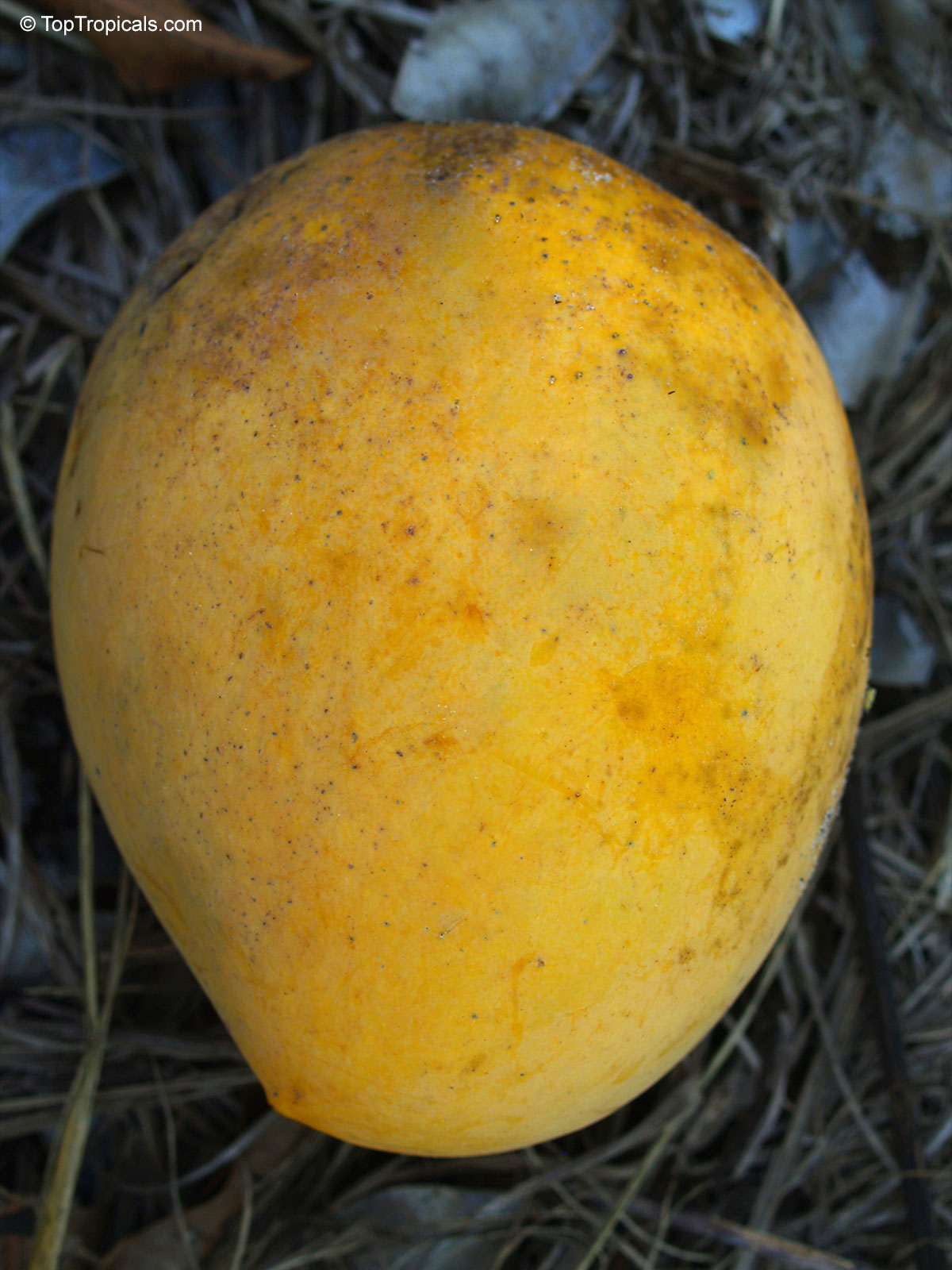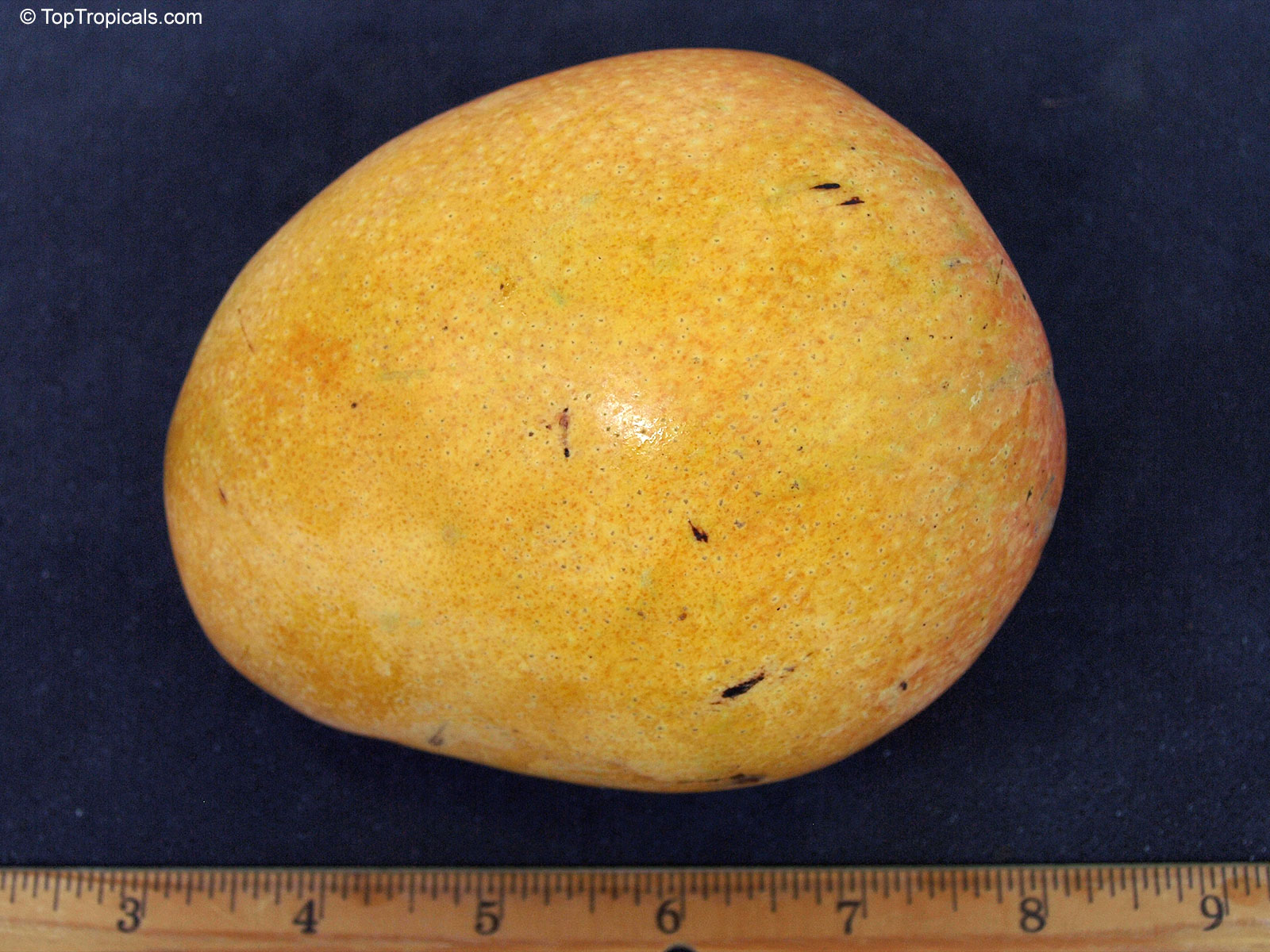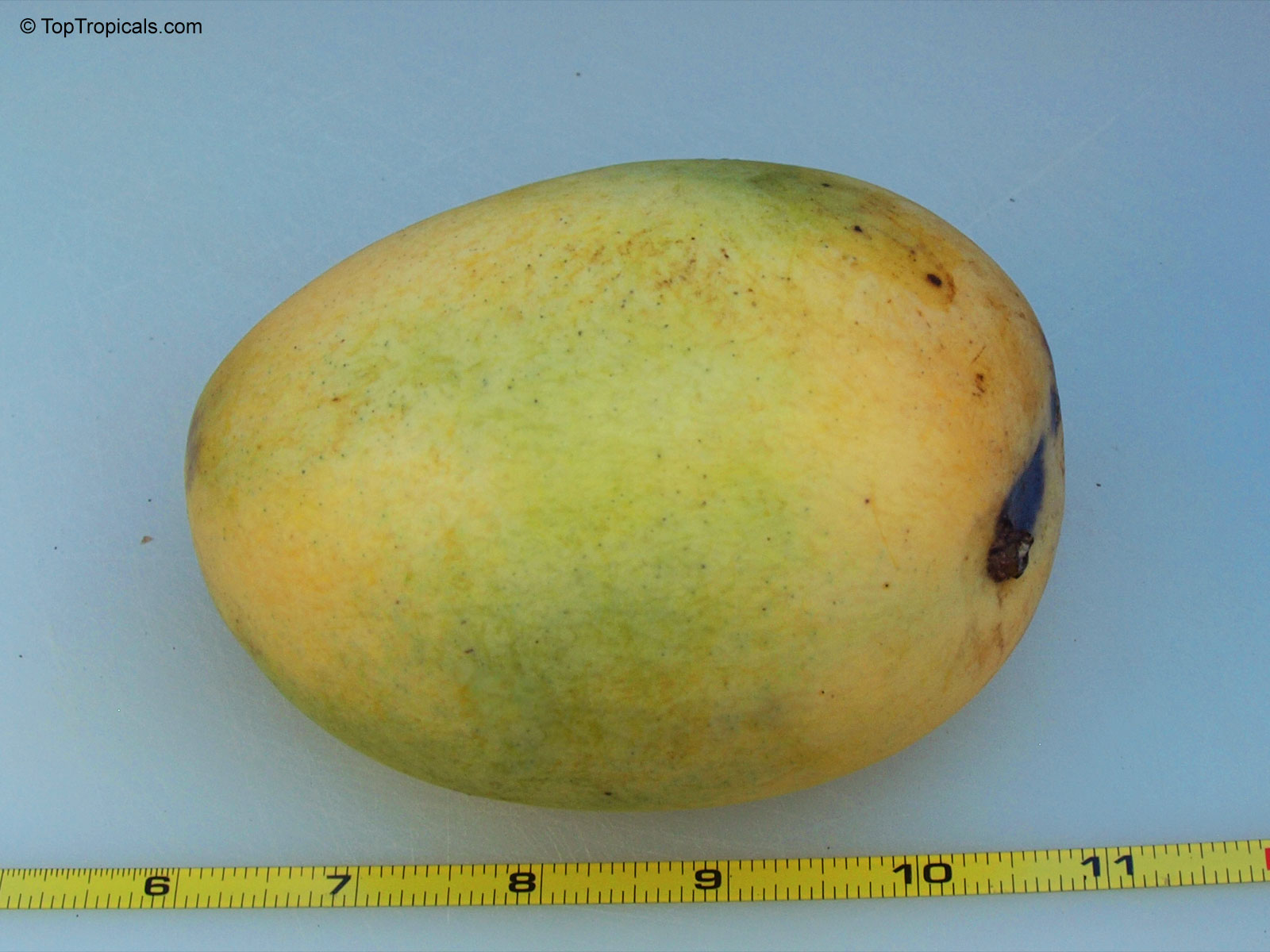Mangifera indica 'Dunkan' (Dunkan Mango)
Top Tropicals Plant Encyclopedia
Botanical name: Mangifera indica
Common name: Dunkan Mango
Cultivar: Dunkan
Family: Anacardiaceae
Origin: South Asia and India
Hardiness: 30°F






Mangifera indica (Mango) is a large evergreen tree native to South Asia and among the oldest cultivated fruit trees, grown in India for over 4,000 years. In tropical climates it can reach 60-80 feet with a broad crown of glossy leaves. Small yellowish flowers appear in spring, followed by fleshy drupes known worldwide as mangoes.
Fruit shape varies from oval to kidney-shaped, with skin that may remain green or ripen to yellow, orange, or red. The flesh is juicy and aromatic, sometimes fiberless and sweet, sometimes more resinous depending on type. Mangoes are eaten fresh, dried, blended, or cooked, making them one of the most versatile tropical fruits. Some people experience irritation on the lips from the peel, so fruits are usually eaten peeled.
The tree thrives in full sun and well-drained soil in warm climates, hardy only to USDA Zones 9-11. With hundreds of named cultivars, Mangifera indica remains one of the world s most widely grown and culturally important fruit trees.
See Mango varieties.
The Duncan mango is a Florida cultivar developed by breeder David Sturrock in the mid-20th century. It is widely appreciated for its excellent production, disease resistance, and eating quality. The tree is vigorous yet easy to manage, forming an open, symmetrical canopy that can be maintained at about 8-10 feet in height and spread with minimal pruning. It performs well in humid tropical and subtropical climates and shows notable tolerance to anthracnose, making it reliable under rainy growing conditions.
The fruit is oblong and uniform in shape throughout the canopy, averaging about 20 ounces. At maturity, the skin is solid canary yellow with no blush. The thick, waxy rind resists handling damage, while the flesh is bright yellow, velvet-smooth, and completely fiber-free. The flavor is exceptionally sweet, slightly tangy, and refreshing, with a hint of citrus and a pleasant fruity aroma. Duncan ripens in mid-season, typically from June to July in Florida, producing consistently heavy crops. It grows best in USDA Zones 10-11 and tolerates brief temperature drops to around 30F when protected.
Related cultivars: Mangifera indica 'Dunkan' (Dunkan Mango)
- Mangifera indica 'Sunset' ''Sunset'' (Sunset Mango)
- Mangifera indica Ah Ping ''Ah Ping'' (Ah Ping Mango )
- Mangifera indica Alampur Baneshan ''Alampur Baneshan'' (Alampur Baneshan Mango)
- Mangifera indica Alphonso ''Alphonso'' (Alphonso Mango)
- Mangifera indica Baileys Marvel ''Baileys Marvel'' (Baileys Marvel Mango)
- Mangifera indica Beverly ''Beverly'' (Beverly Mango)
- Mangifera indica Bombay ''Bombay'' (Bombay Mango)
- Mangifera indica Cac ''Cac'' (Cac Mango)
- Mangifera indica Carabao ''Carabao'' (Carabao Mango)
- Mangifera indica Carrie ''Carrie'' (Carrie Mango)




